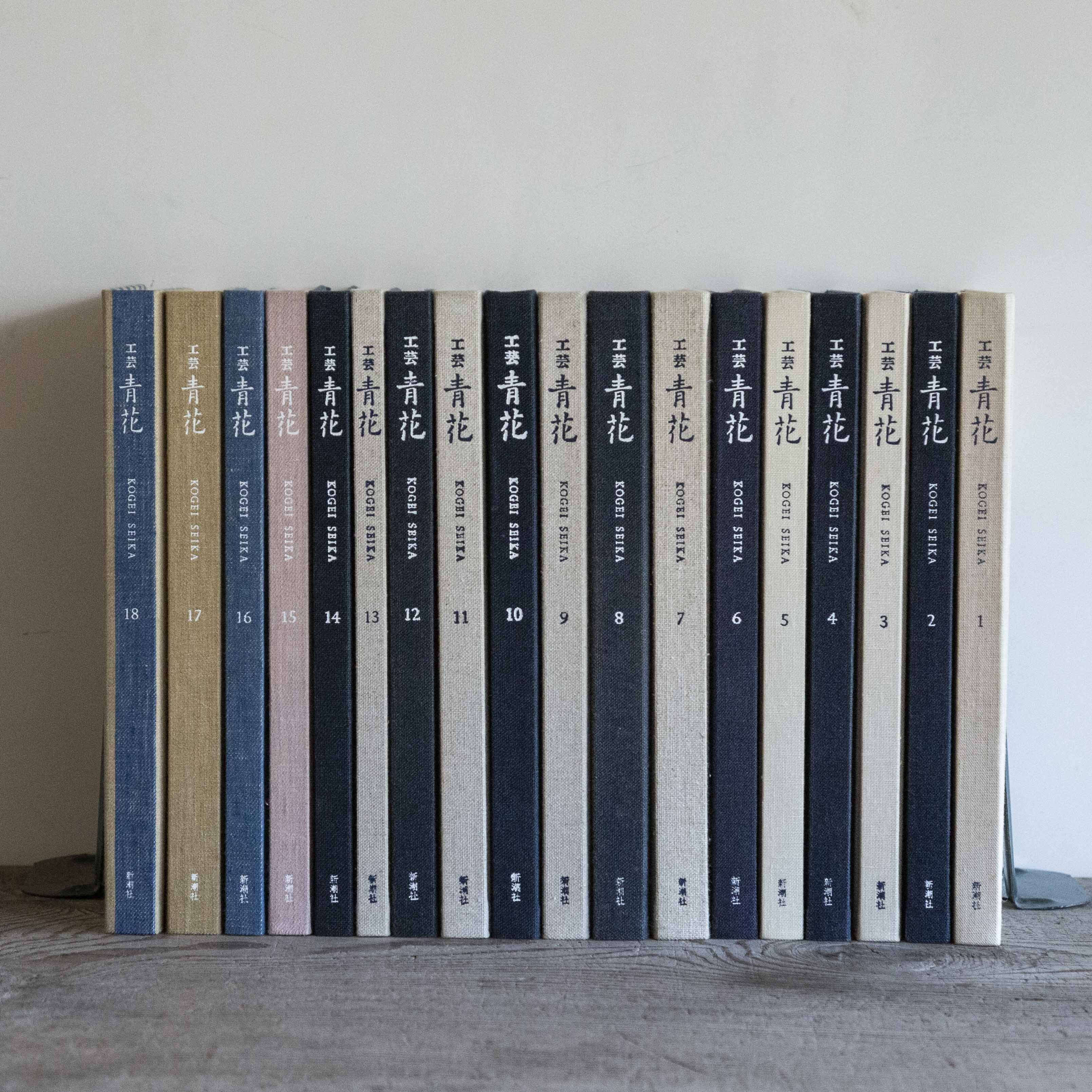
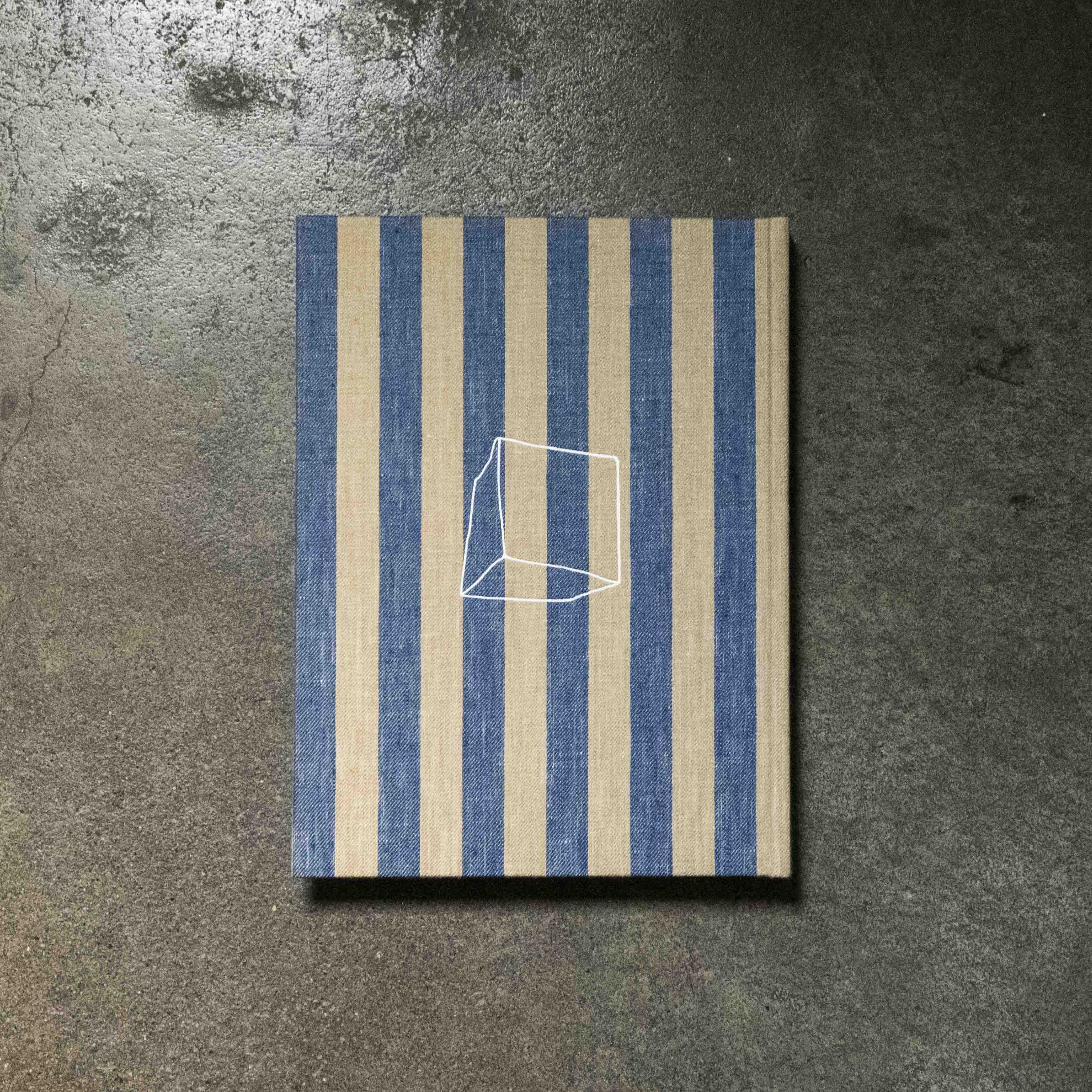
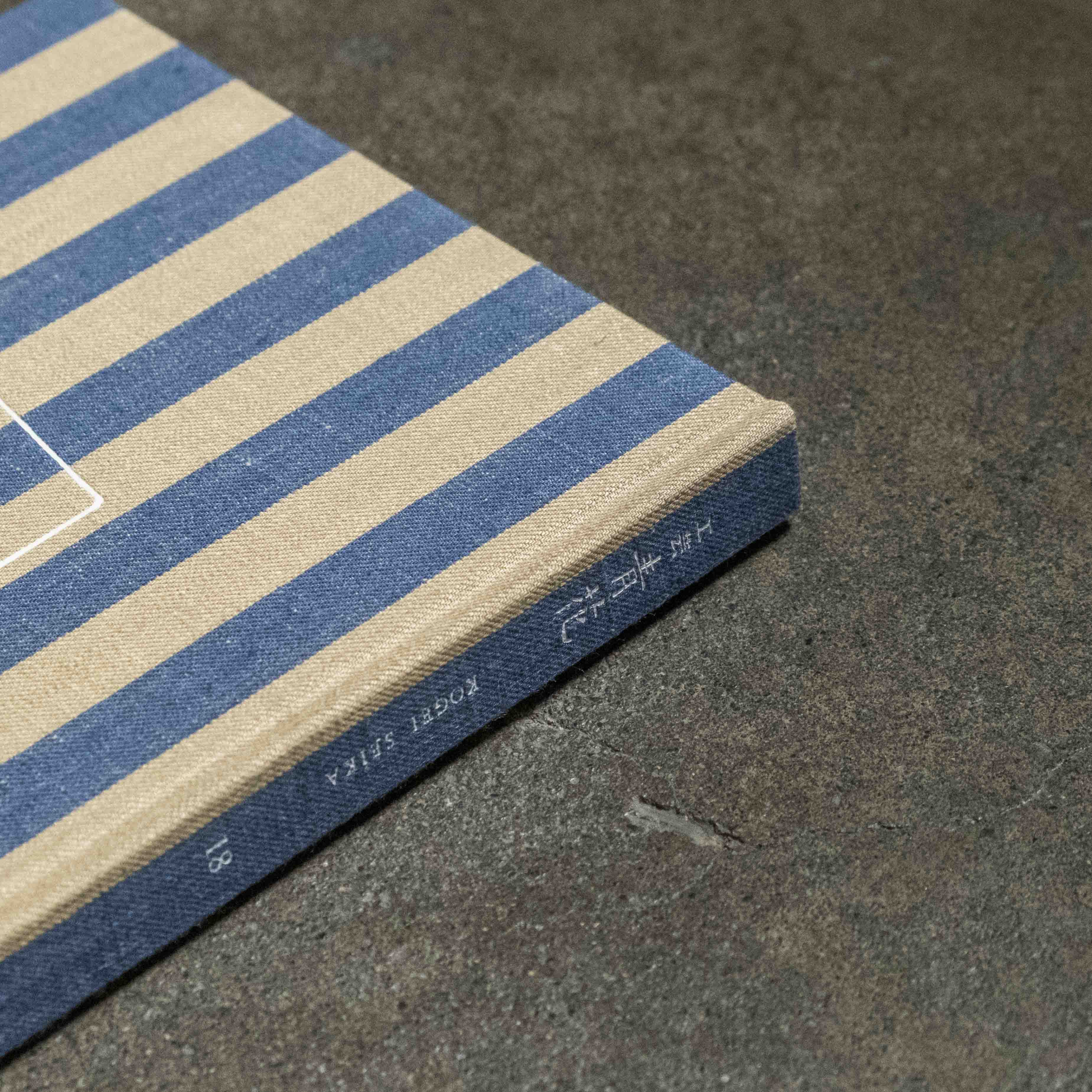
『工芸青花』18号
■2022年12月10日刊
■A4判|45R製麻布張り上製本|見返し手漉和紙(土佐和紙)
■カラー208頁|ハタノワタル作の手漉和紙を貼付したページあり
■限定1000部|18,000円+税
御購入はこちらから
https://shop.kogei-seika.jp/products/detail.php?product_id=1001
Kogei Seika vol.18
■Published in 2022 by Shinchosha, Tokyo
■A4 in size, linen cloth coverd book with endpaper made of Japanese paper
■208 Colour Plates, Frontispiece with Japanese paper made by Wataru Hatano
■Each chapter is accompanied by an English summary and all photographs are with captions in English
■Limited edition of 1000
■18,000 yen (excluding tax)
To purchase please click
https://shop.kogei-seika.jp/products/detail.php?product_id=1001
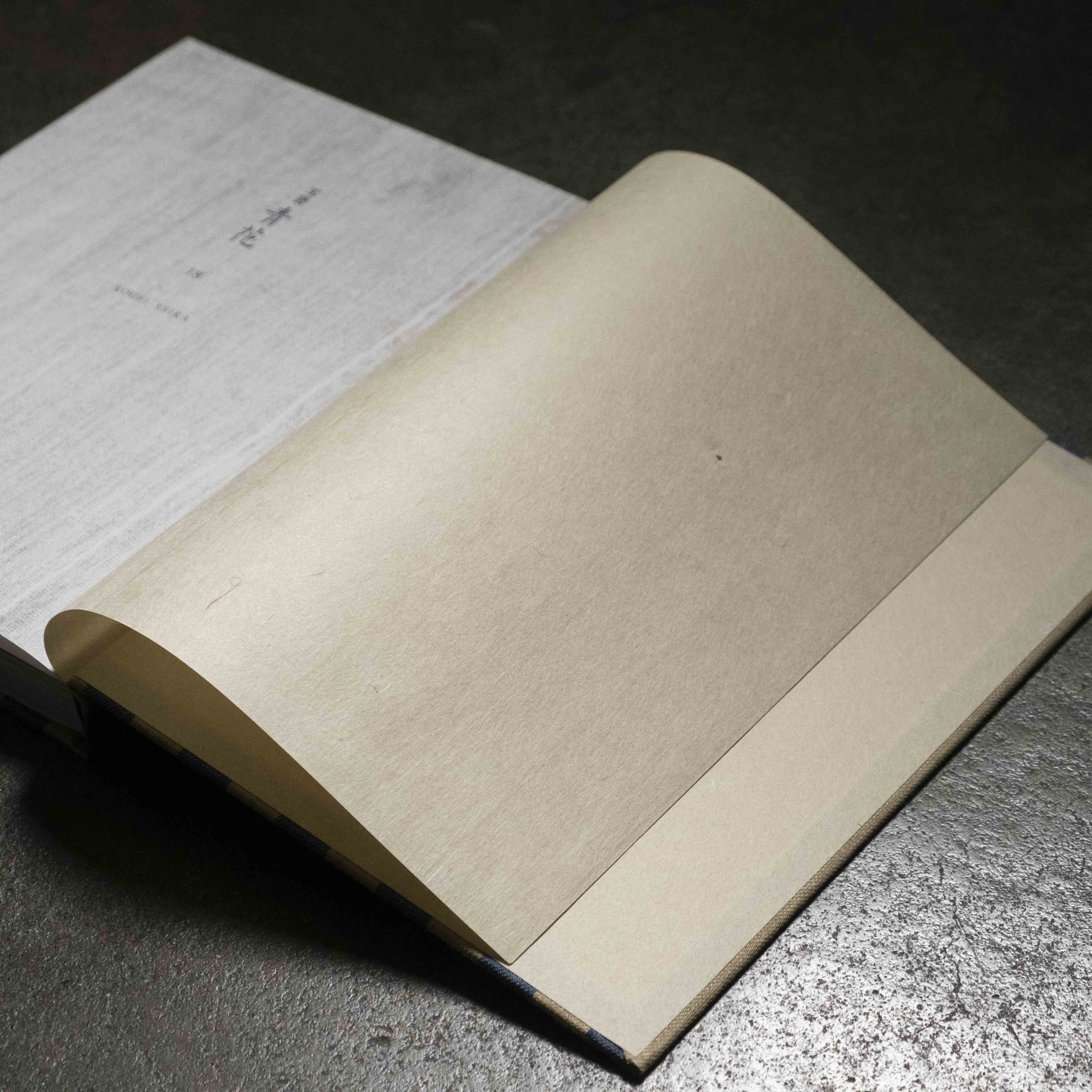
目次 Contents
1|川瀬敏郎 花会「無窮」
Ikebana ceremony ‘Mukyu’ -The Eternity by Toshiro Kawase
・花会「無窮」拝見記 堀畑裕之
・後礼 石川比呂志
・花は水際をこそ 木村宗慎
・会記
2|古道具坂田とmuseum as it is
Antique Sakata and museum as it is
・坂田さんの仕事 菅野康晴
3|ボイマンス美術館の西洋工芸コレクション
The Everyday Objects in the Collection of the Museum Boijmans Van Beuningen
・ロッテルダム行 金沢百枝
・フォークアート・民藝・古道具坂田 清水喜守
4|杉謙太郎の器と花
Vases and Flowers by Kentaro Sugi
・放蕩息子の帰還 高木崇雄
・見えない花 村井孝行
連載 Series
・ロベール・クートラスをめぐる断章群12 堀江敏幸
精華抄
土佐和紙 若菜晃子
扉の絵 ハタノワタル
1|川瀬敏郎 花会「無窮」
Ikebana ceremony ‘Mukyu’ -The Eternity by Toshiro Kawase
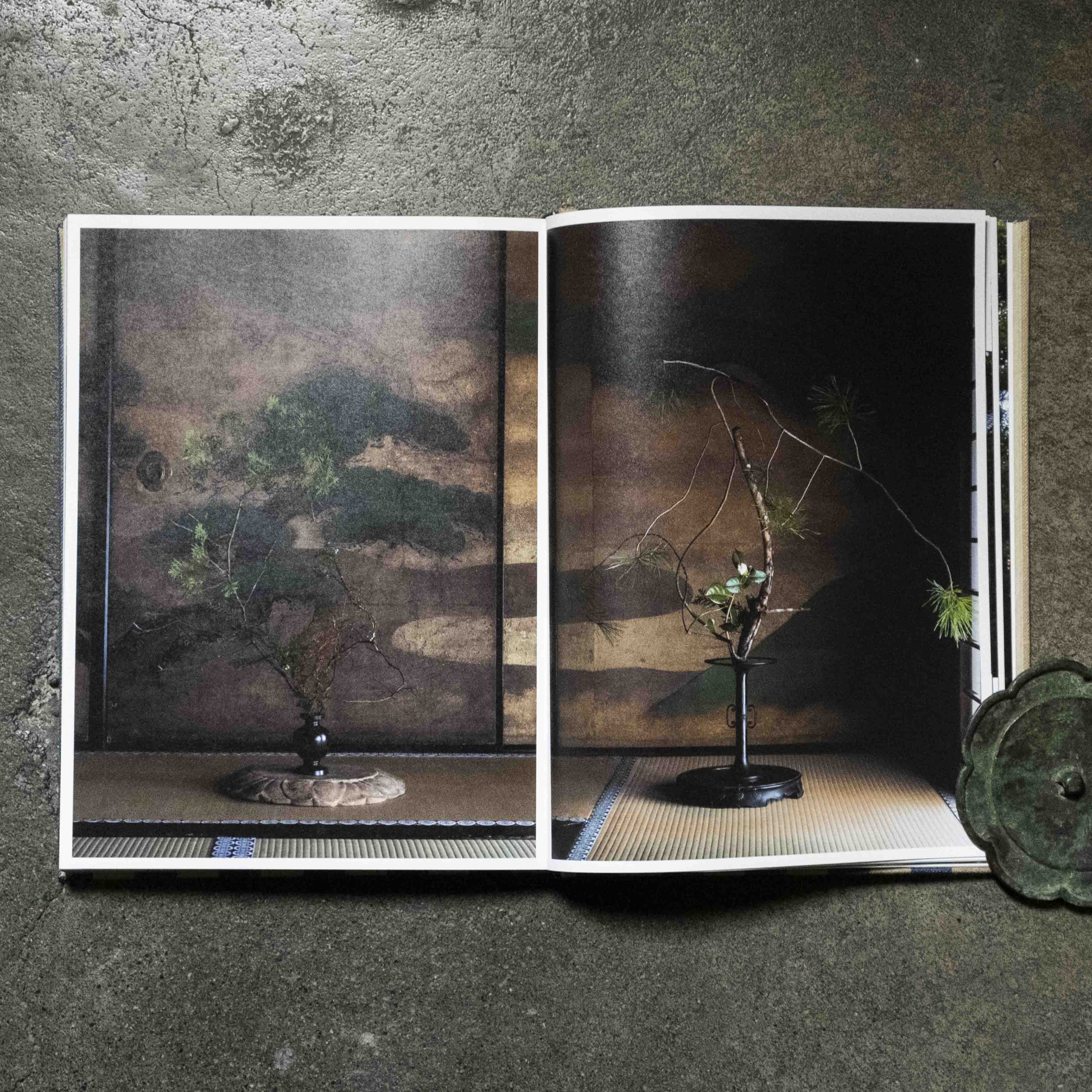
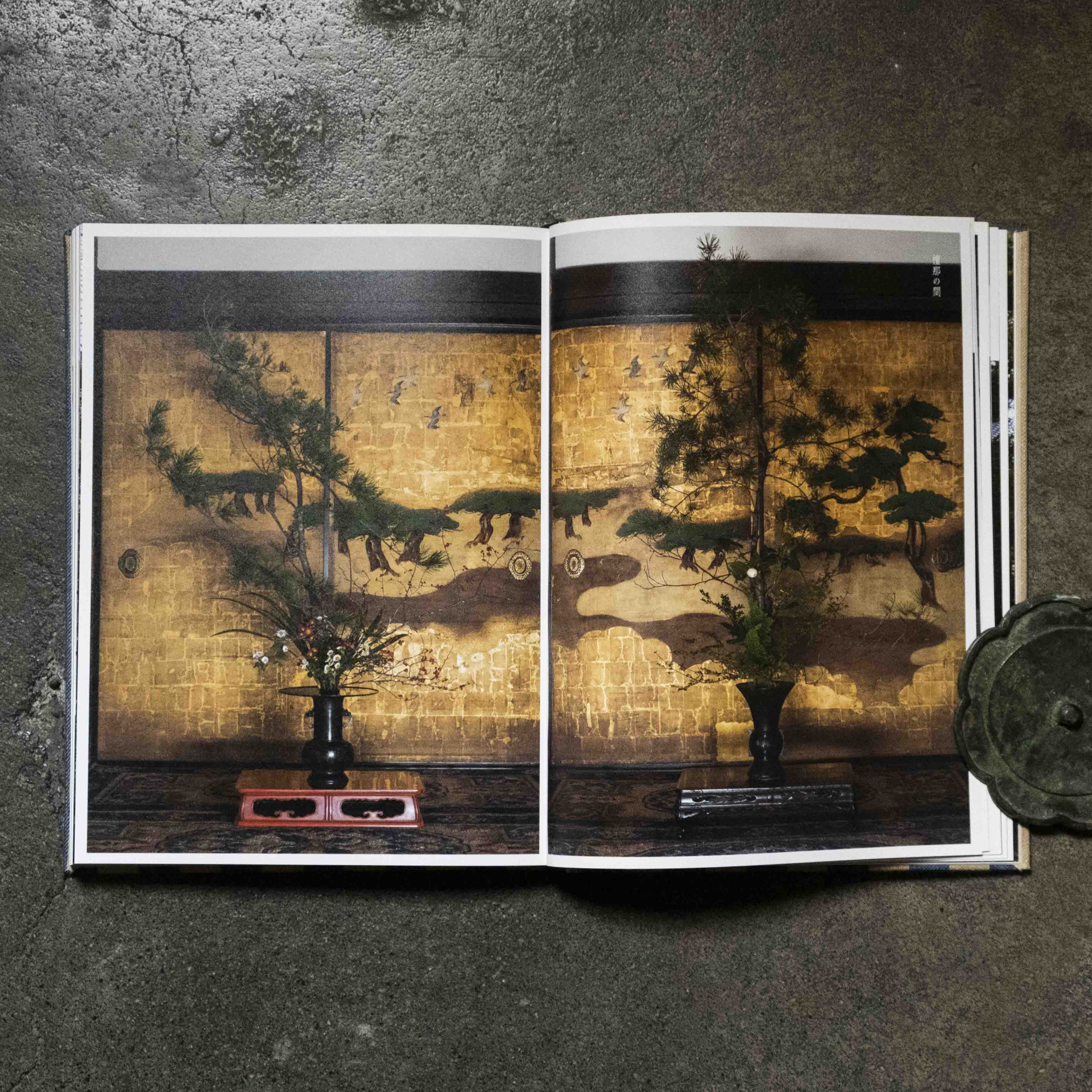
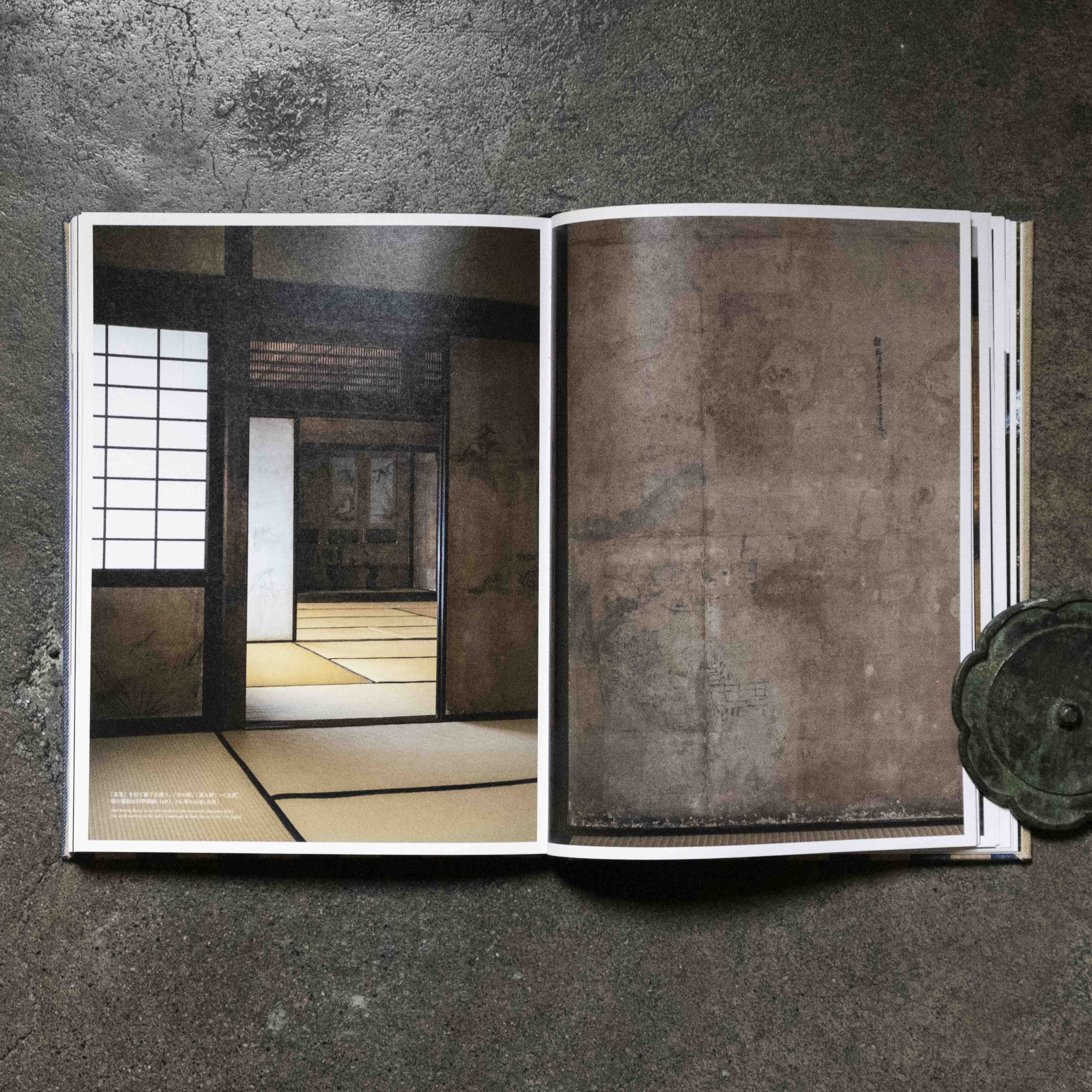
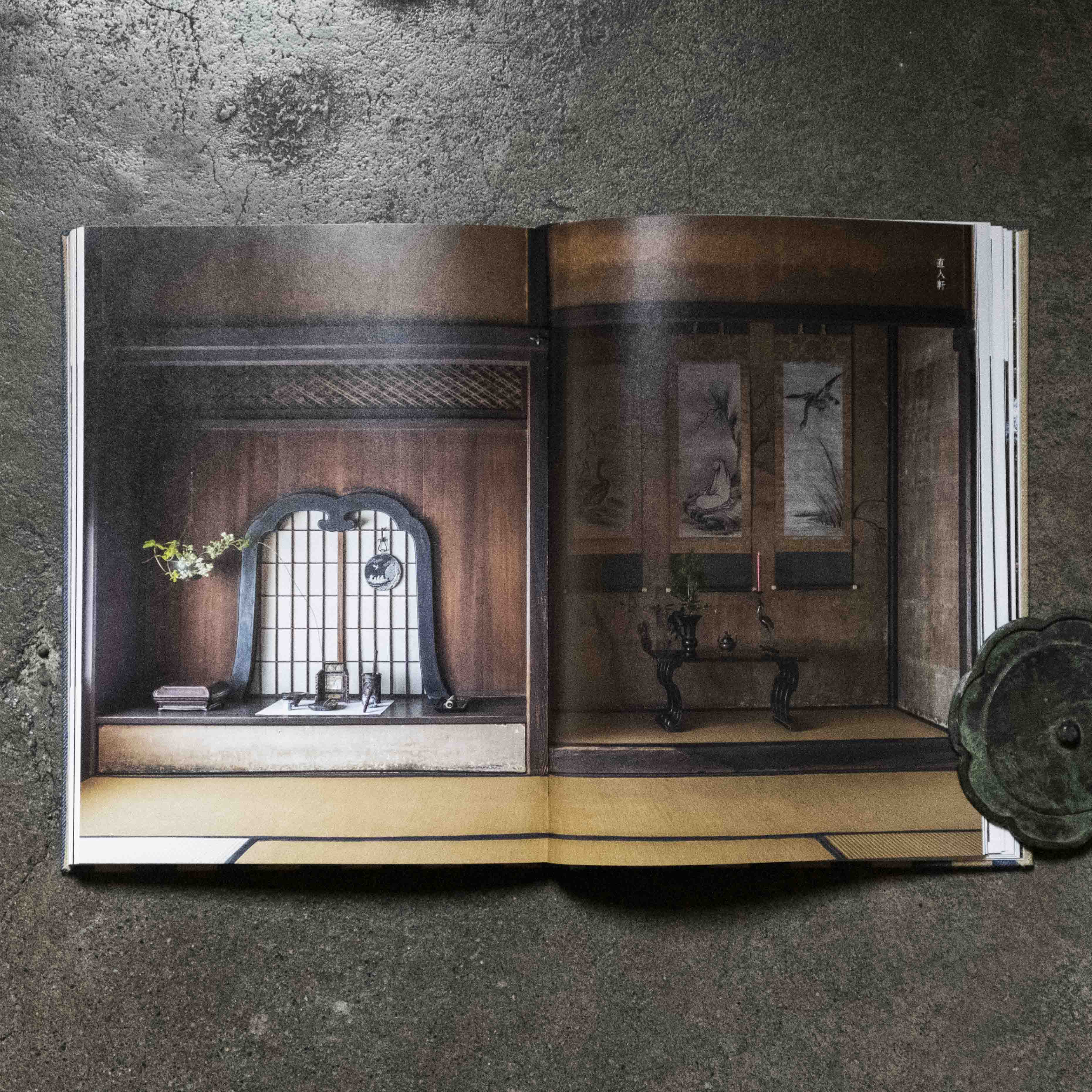
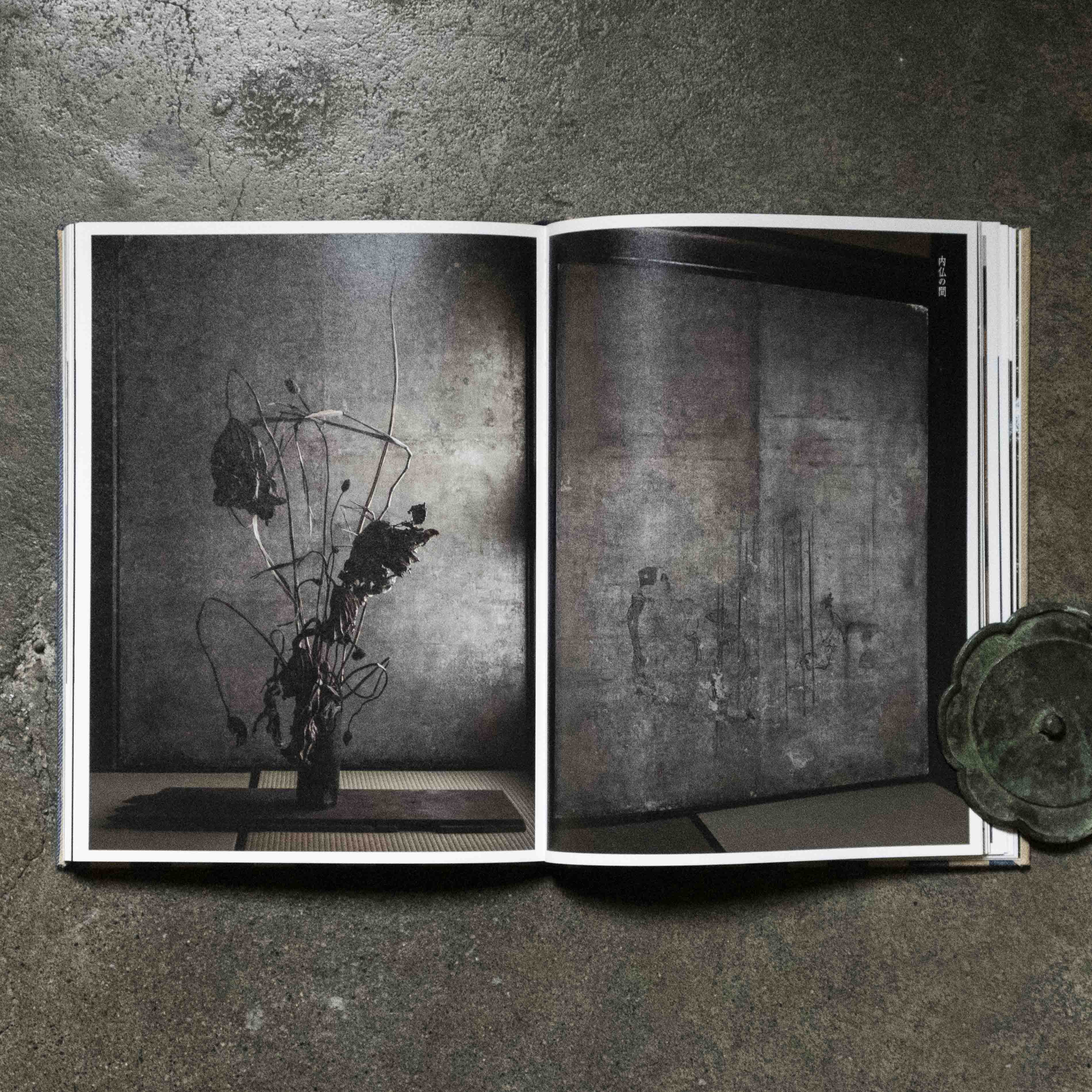
昨年の11月6日と7日、京都の大徳寺孤篷庵で、川瀬敏郎さん(1948年生れ)による花会「無窮」がおこなわれた。「たてはな」と「なげいれ」というふたつの古典様式を現代に蘇生させた表現者として、後世語りつがれるであろう花人の、自他ともにみとめる集大成的な会だった。
案内状に、川瀬さんはこう記している。〈「無窮」は、国土に自生する、魂の記憶としての一木一草一花本来に具わっている「真」を奉る一会で、私が『花をたてる』で対峙してきた命題でした〉
『花をたてる』は、やはり昨年7月に刊行された川瀬さんの作品集で、刊行時、川瀬さんはこう書いている。〈『花をたてる』は、いけばなの起源とされる「たてはな」と対峙したいという、私の積年の思いが出発点となっています。「たてはな」は、かたちは単純ですが、宗教と芸能の境にある際疾い花です。芸能に傾くと形式へ収斂され、「たてる」という本質からは遠退きます。私は、芸能の先にある、生命の始源へと通じる花を求めました。もとより正解などなく、「芸能の先の花」をかたちにするには、私自身が「たてる」を生きるしか道はありませんでした〉
花会「無窮」の案内状には〈『花をたてる』刊行記念〉と銘打たれていた。その意味では、本の(主題の)具現化でもあった。異例なことに、小堀遠州、松平不昧ゆかりの名刹のほぼ全室が花の場に変じていた。そこで、いつもどおり、川瀬さんはただひとりでいけていた。長年みてきた、孤独と至福のうしろ姿だった。S
On the sixth and seventh of November last year, Toshiro Kawase (b. 1948) held the flower ceremony entitled ‘Mukyu’ meaning ‘Eternity’ at the Koho-an, Daitokuji Temple in Kyoto. The party was undoubtedly the culmination of the Ikebana artist, which future generations recall as the one who revived the two classical styles of Ikebana, i.e., Tatehana (formal style to arrange flowers in an upright position) and Nage-ire(freestyle arrangement).
In his invitation letter, Kawase wrote: ‘Mukyu’ is the ceremony dedicated to the ‘formality’ inherent in every tree, plant and flower that grows in our land. They are the memory of the soul. It was the proposition I confronted in the book Flowers in Formality.
A book Flowers in Formality was also published by Kawase in July last year. At the time of its publication, he wrote: ‘Flowers in Formality’ was the fruit of my long-held desire to confront Tatehana. Tatehana (literally, to put up the flower) is said to be the origin of Ikebana. Tatehana has a simple form, but it is a flower that lies on the border between religion and the performing arts. If you lean towards the performing arts, you converge on formalism and move away from the essence. I sought a flower that goes beyond the performing arts and leads to the origin of life. There is no correct answer, and the only way to give form to the ‘flower beyond the Ikebana’ was to live as Tatehana myself.
Also, the invitation letter was entitled ‘Commemoration of the publication of Flowers in Formality’. In this sense, the flower ceremony was the realisation of the book’s (subject matter). Almost all the rooms of the famous temple, associated with Kobori Enshu and Matsudaira Fumai, the notorious tea ceremony masters, were transformed into a place for flowers. There, as usual, Kawase was alone, with flowers. It was the back view of solitude and bliss that I have seen for many years. (S)
2|古道具坂田とmuseum as it is
Antique Sakata and museum as it is
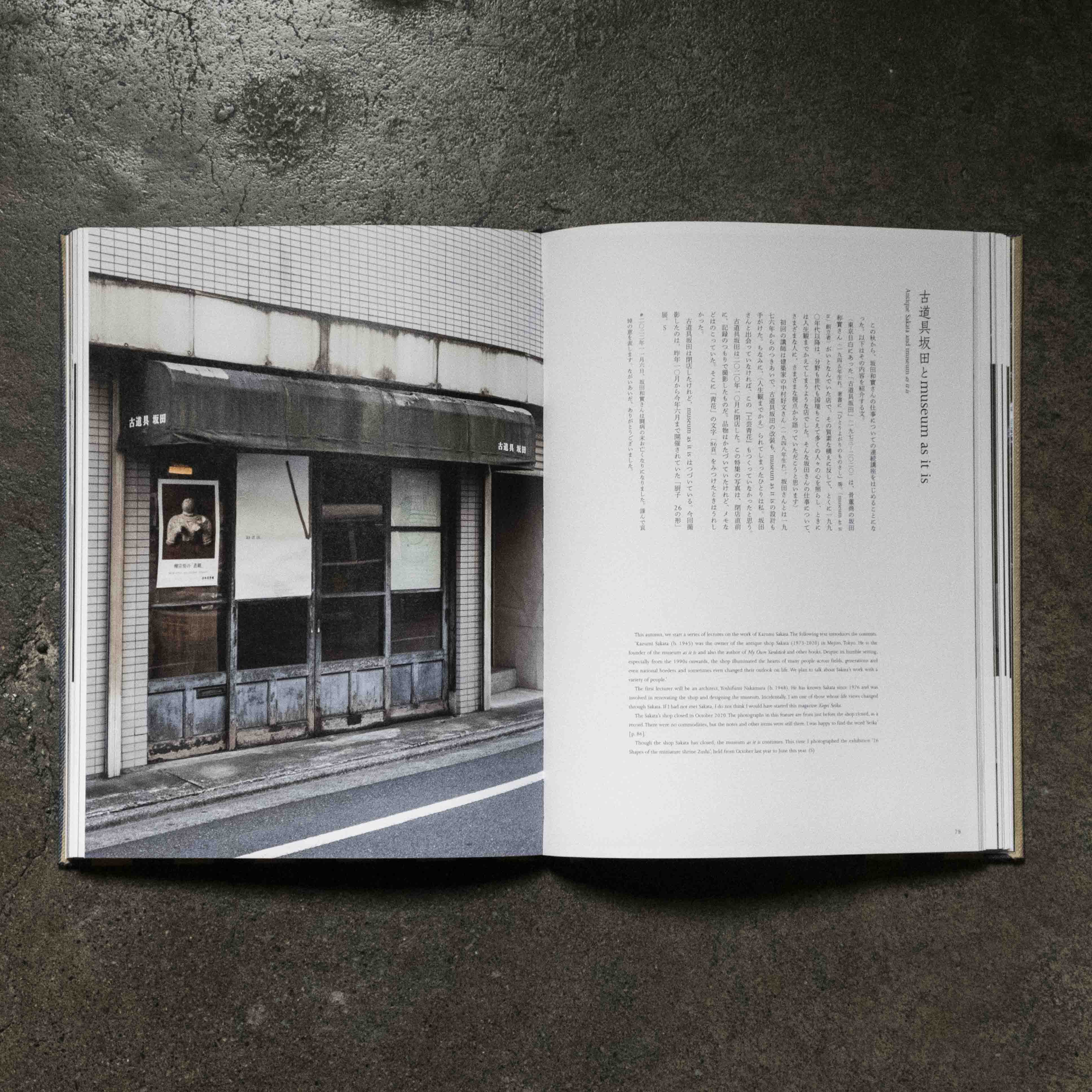
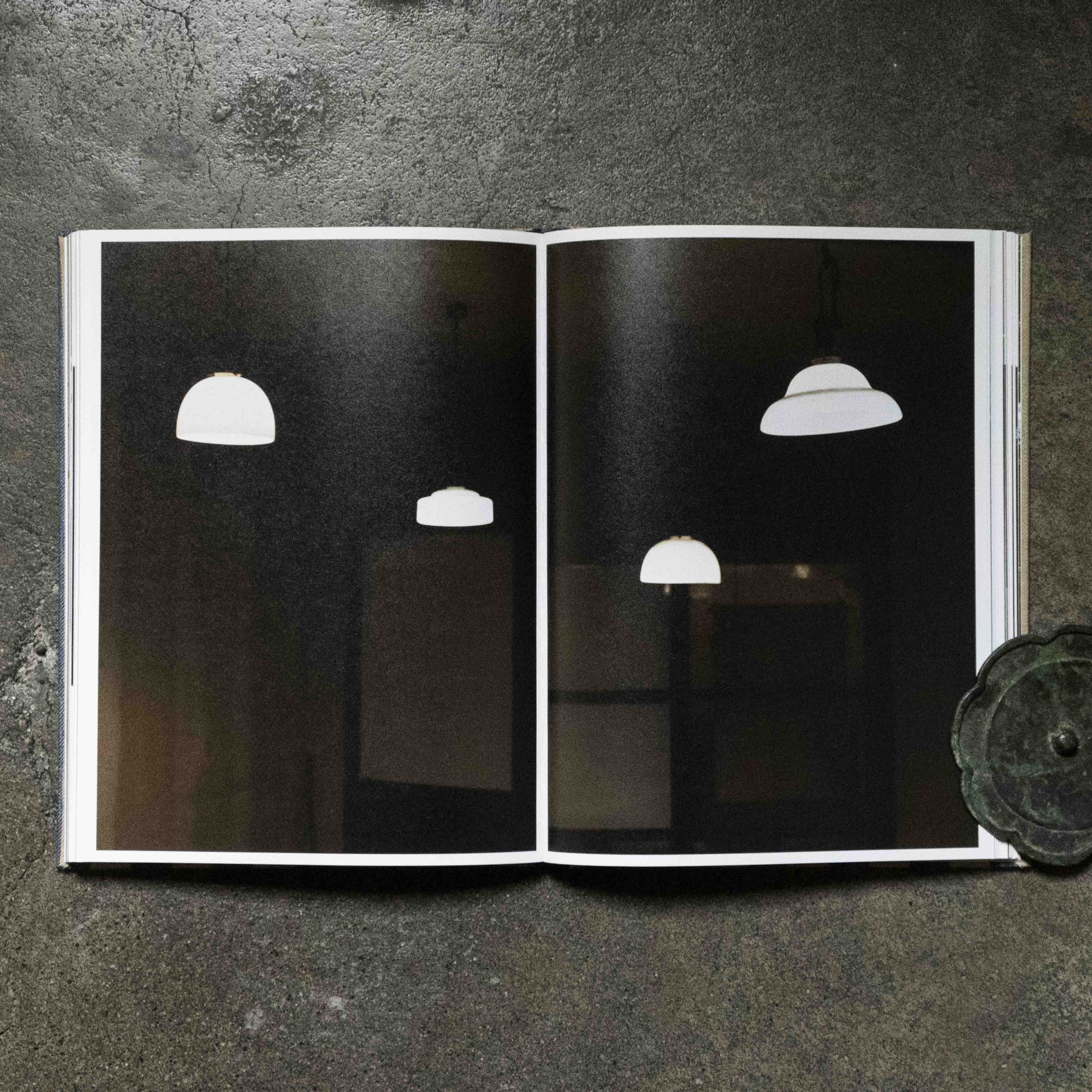
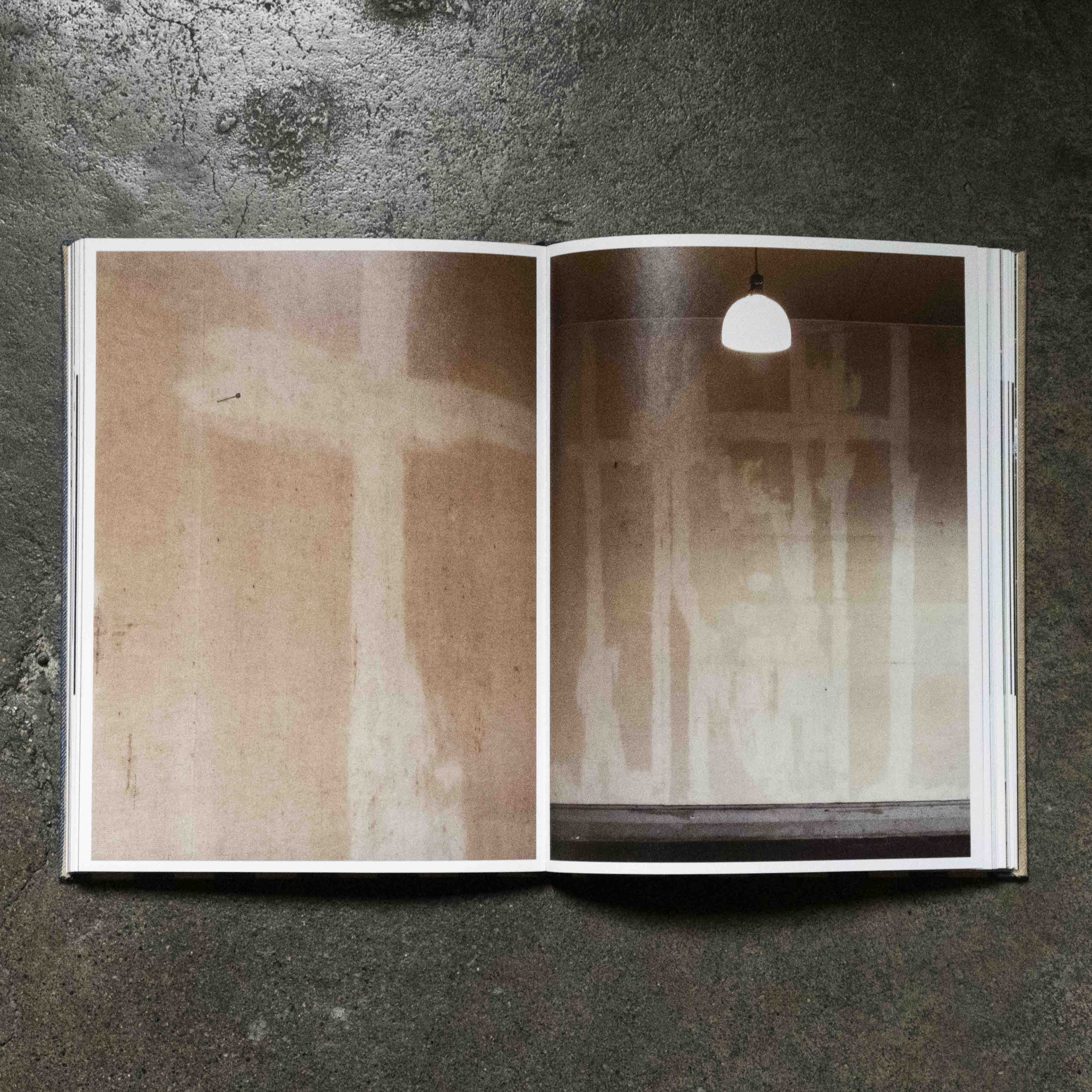
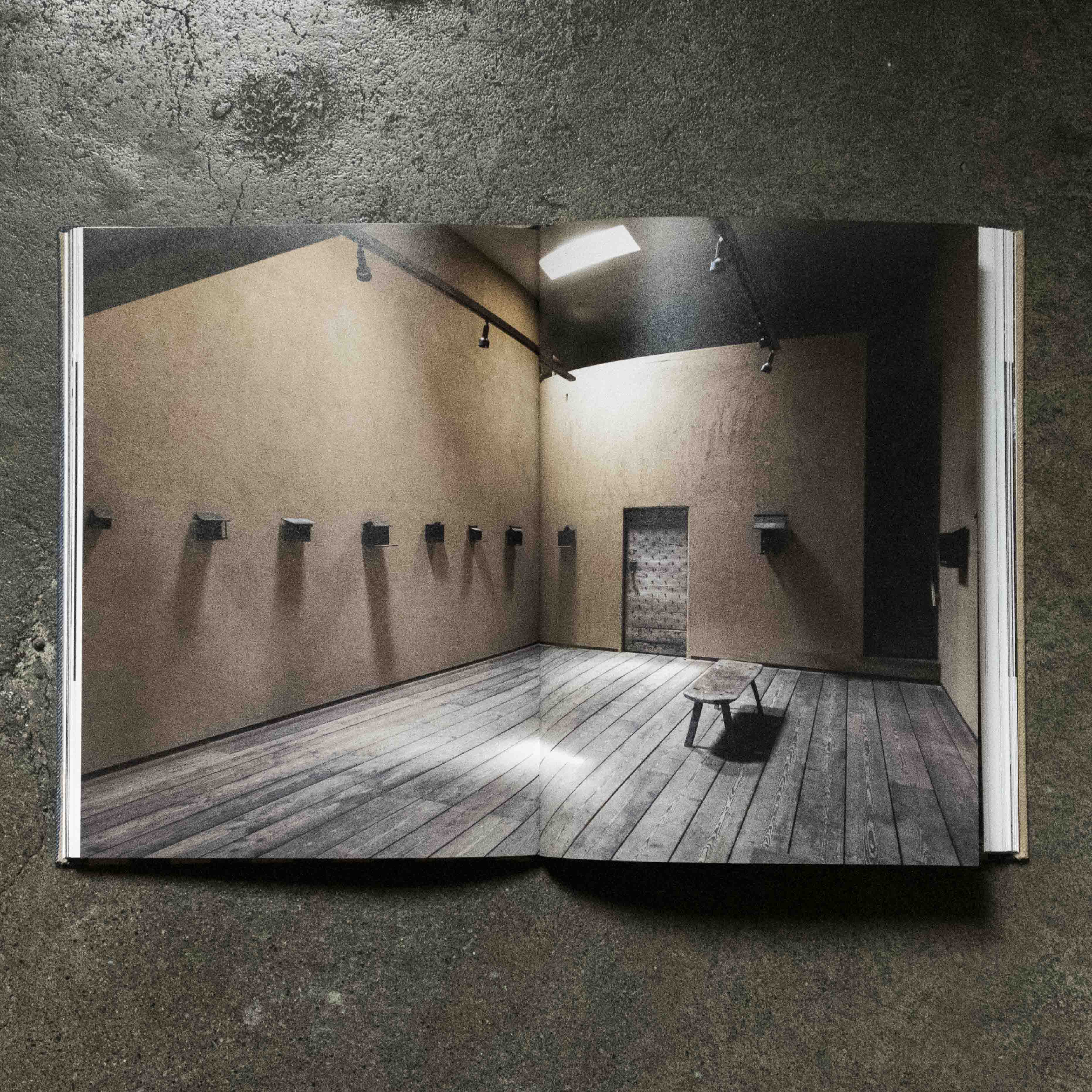
この秋から、坂田和實さんの仕事についての連続講座をはじめることになった。以下はその内容を紹介する文。
〈東京目白にあった「古道具坂田」(1973-2020)は、骨董商の坂田和實さん(1945年生れ。著書に『ひとりよがりのものさし』等。「museum as it is」創立者)がいとなんでいた店で、その質素な構えに反して、とくに1990年代以降は、分野も世代も国境もこえて多くの人々の心を照らし、ときには人生観までかえてしまうような店でした。そんな坂田さんの仕事について、さまざまな人に、さまざまな視点から語っていただこうと思います〉
初回の講師は建築家の中村好文さん(1948年生れ)。坂田さんとは1976年からのつきあいで、古道具坂田の改装も、museum as it isの設計も手がけた。ちなみに、〈人生観までかえ〉られてしまったひとりは私。坂田さんと出会っていなければ、この『工芸青花』もつくっていなかったと思う。
古道具坂田は2020年10月に閉店した。この特集の写真は、閉店直前に、記録のつもりで撮影したものだ。品物はかたづいていたけれど、メモなどはのこっていた。そこに「青花」の文字[86頁]をみつけたときはうれしかった。
古道具坂田は閉店したけれど、museum as it is はつづいている。今回撮影したのは、昨年10月から今年6月まで開催されていた「厨子 26の形」展。S
*2022年11月6日、坂田和實さんは闘病の末お亡くなりになりました。謹んで哀悼の意を表します。ながいあいだ、ありがとうございました。
This autumn, we start a series of lectures on the work of Kazumi Sakata. The following text introduces the contents.
‘Kazumi Sakata (b. 1945) was the owner of the antique shop Sakata (1973-2020) in Mejiro, Tokyo. He is the founder of the museum as it is and also the author of My Own Yardstick and other books. Despite its humble setting, especially from the 1990s onwards, the shop illuminated the hearts of many people across fields, generations and even national borders and sometimes even changed their outlook on life. We plan to talk about Sakata’s work with a variety of people.’
The first lecturer will be an architect, Yoshifumi Nakamura (b. 1948). He has known Sakata since 1976 and was involved in renovating the shop and designing the museum. Incidentally, I am one of those whose life views changed through Sakata. If I had not met Sakata, I do not think I would have started this magazine Kogei Seika.
The Sakata’s shop closed in October 2020. The photographs in this feature are from just before the shop closed, as a record. There were no commodities, but the notes and other items were still there. I was happy to find the word ‘Seika’ [p. 86].
Though the shop Sakata has closed, the museum as it is continues. This time I photographed the exhibition ‘26 Shapes of the miniature shrine Zushi’, held from October last year to June this year. (S)
3|ボイマンス美術館の西洋工芸コレクション
The Everyday Objects in the Collection of the Museum Boijmans Van Beuningen
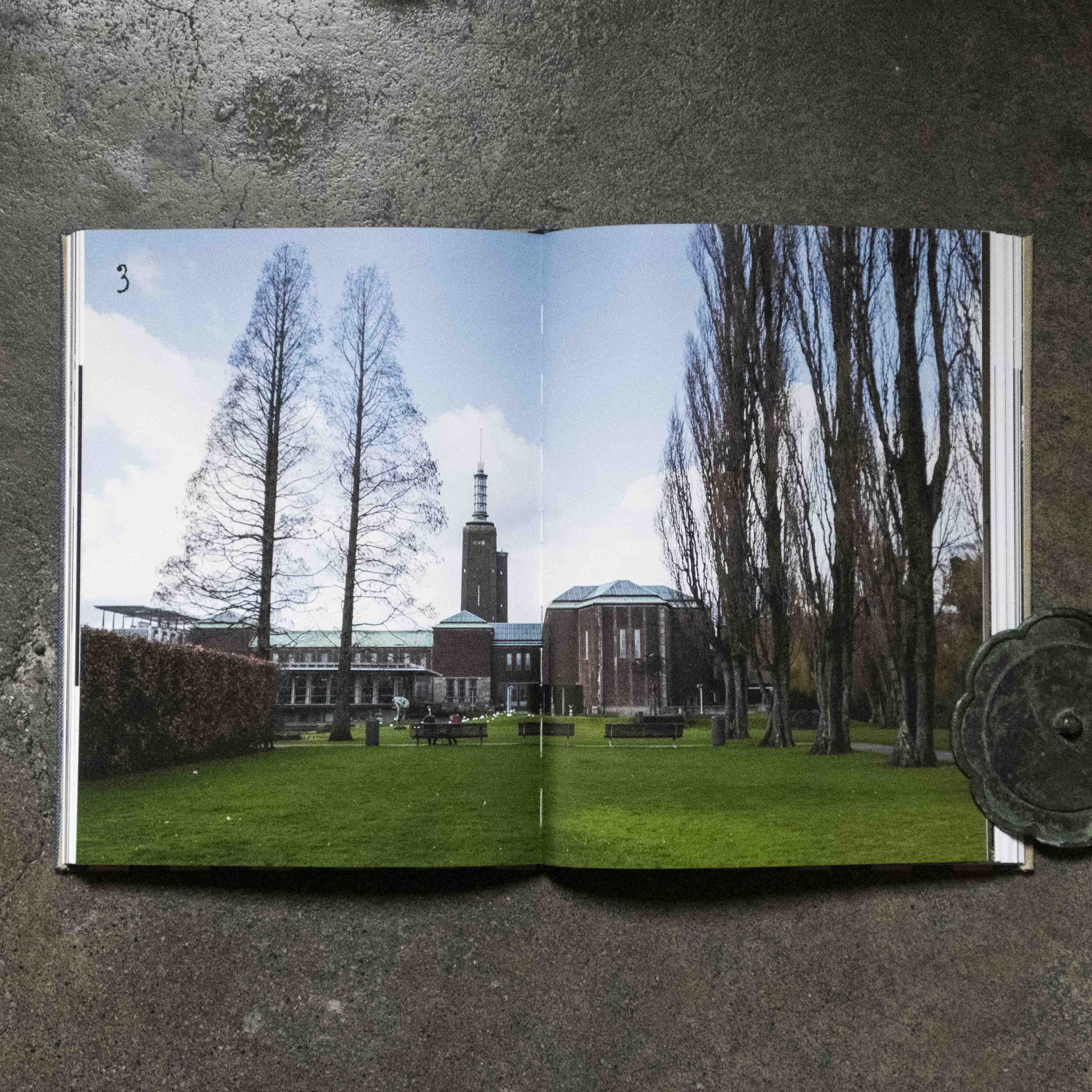
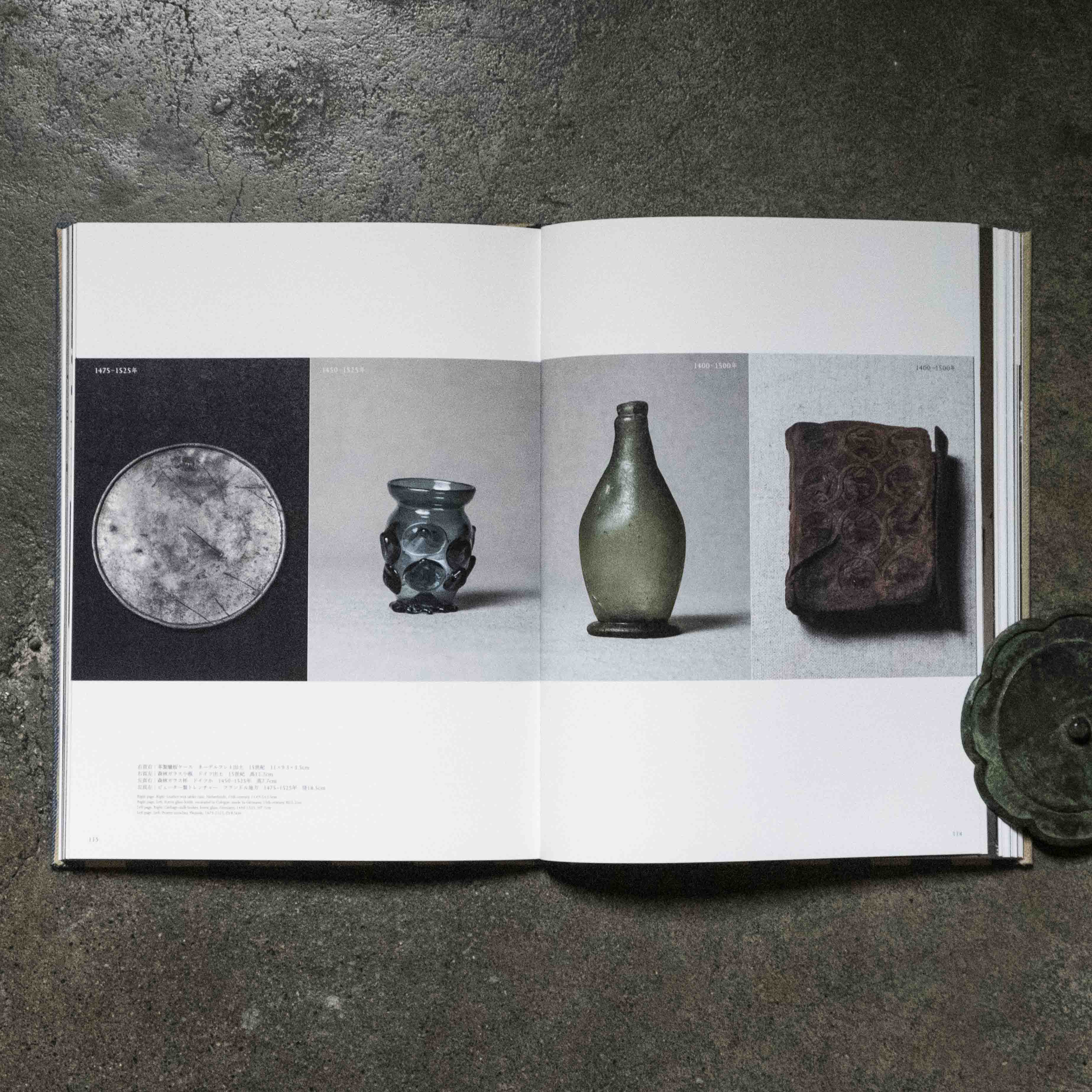
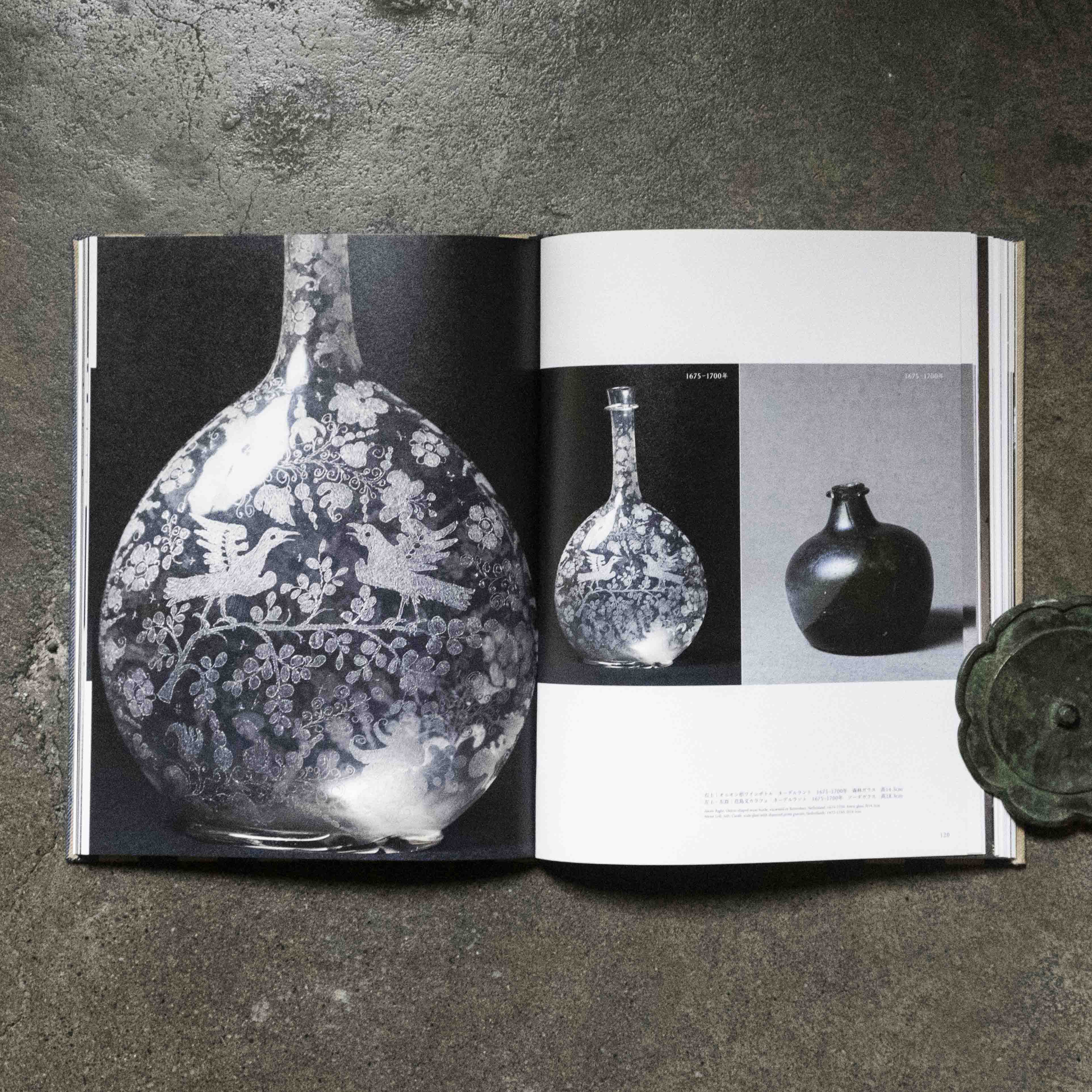
西洋中世美術史家の金沢百枝さんと、オランダのロッテルダムにあるボイマンス・ファン・ベーニンゲン美術館をたずねたのは2017年3月。2日間かよったが、両日とも曇り日で、ときおり「オランダの光」がさした。
ボイマンス美術館の創立は1849年、多くの寄贈者にめぐまれ、中世から現代美術にいたる収蔵品は15万点をこえる。レンブラントやゴッホ、モンドリアンほか名画も数多く、なかでもピーテル・ブリューゲルの《バベルの塔》は来日したこともあって有名かもしれない。他方、あまり知られていないかもしれないが、中近世の西洋工芸コレクションも1万点ほどあり、このときの目的はそちらだった。
事前に金沢さんと、ほぼ全点公開されている美術館のウェブサイトをみて20点ほどえらび、当日は地下収蔵庫で撮影した。本文で金沢さんが書いているとおり、館員たちの表情には「どうして(わざわざ)これらを?」という疑問があらわだった気もするが、そこで古道具坂田[78頁参照]の話をしてもすぐにはつうじないだろうから、とくに説明はしなかった。金沢さんも私も坂田さんを敬愛していて、取材などでともになにかをみるとき、「坂田さん的」といった符丁をつかったりする(「坂田好み」という意味だ)。
記事にするにあたり、もうひとり、骨董商(古美術28)の清水喜守さん(1983年生れ)に文章を依頼した。清水さんは古道具坂田の影響をうけつつも、ロンドン大学で美術史をまなんだという経歴をもつ。つまり、西洋工芸をみるときに、坂田的視点と、非坂田的(=西洋的/正統的)視点の両様をもつことができる。今回の文章の主題もその差違で、すぐれた「古道具坂田論」だった。S
In March 2017, I visited the Museum Boijmans Van Beuningen in Rotterdam, the Netherlands, with Dr Momo Kanazawa, an art historian. We stayed for two days, both days were cloudy, but there were occasional glimpses of‘Dutch light’.
Founded in 1849, the Boijmans Museum has been blessed with many donors. As a result, it has a collection of over 150,000 pieces of Art ranging from the Middle Ages to contemporary Art. Pieter Bruegel’s Tower of Babel is perhaps the most famous, having been in Japan. On the other hand, although it may not be well known, the museum also has a collection of about 10,000 Western crafts from the Middle Ages, which was the purpose of our visit.
We selected about 20 pieces in advance from the museum’s website, which has almost all of the pieces on display. We took photographs in the underground storeroom on the day of the visit. As Kanazawa writes in the main text, the expressions on the museum staff’s faces showed their doubts: ‘Why did you (bother) to select these?’. I did not even try to explain, as they would take ages to talk about Sakata [see p. 78]. We both have great respect for Sakata. During the photo shoots in Romanesque churches, we often use the phrase ‘in Sakata style’, meaning ‘in the taste of Sakata’.
For the article, I asked another writer, Yoshimori Shimizu (b. 1983), an antique dealer (art & antique 28). Shimizu respects Sakata but studied art history at the University of London. In other words, He has two perspectives when looking at Western crafts. The views are in Sakata style and non-Sakata (Western/Traditional). The subject of his article is also the difference between the two. Thus, it came out as an excellent essay on Sakata. (S)
4|杉謙太郎の器と花
Vases and Flowers by Kentaro Sugi
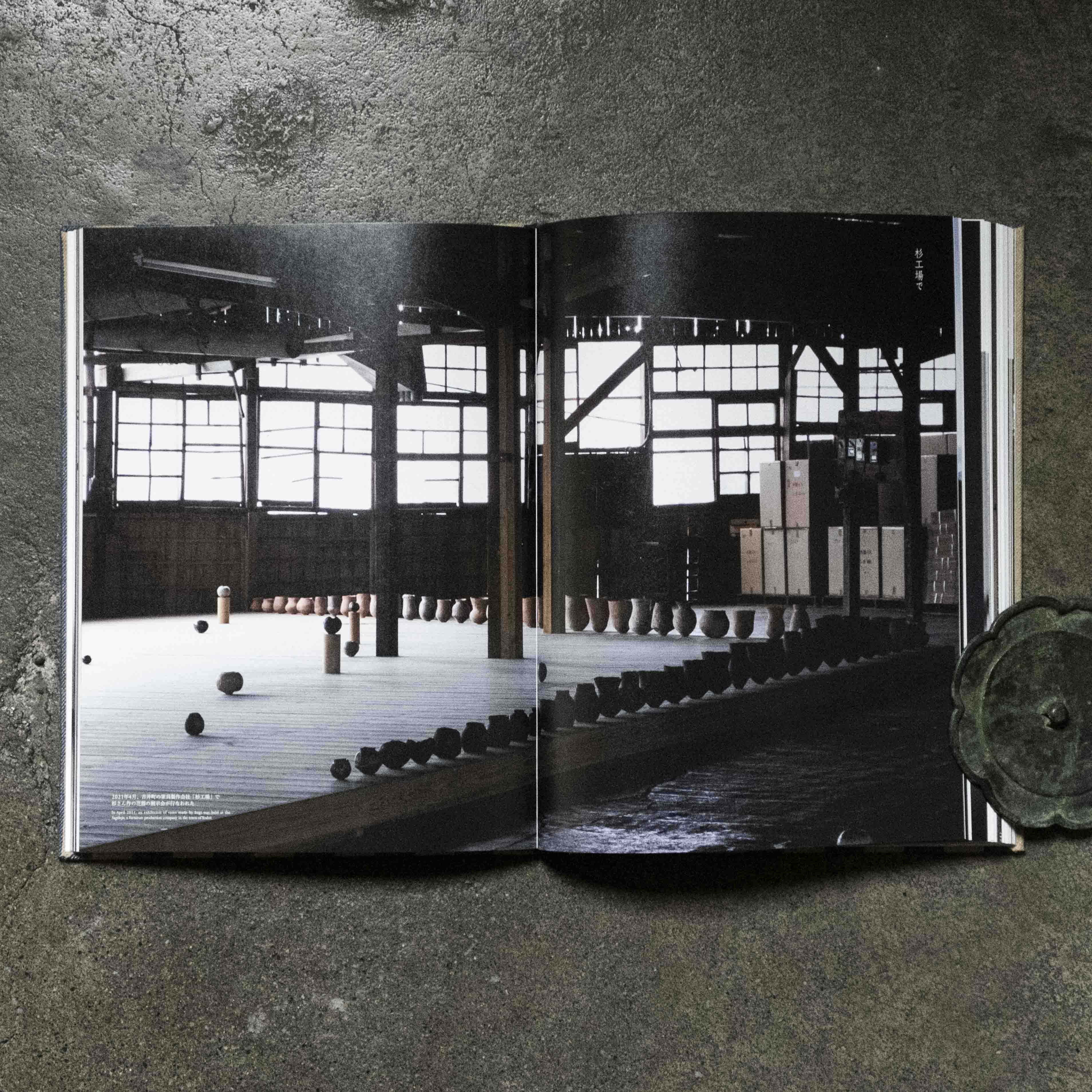
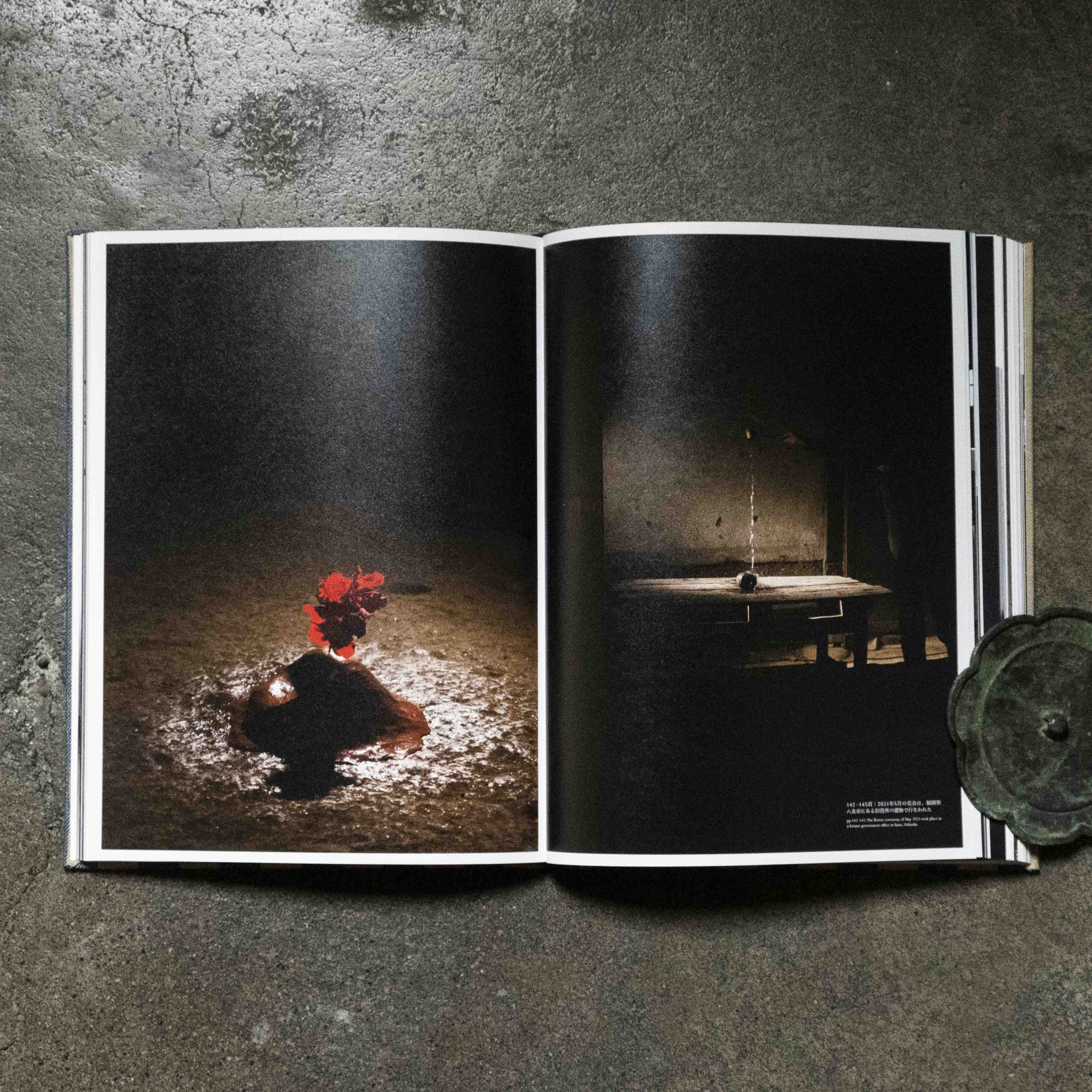
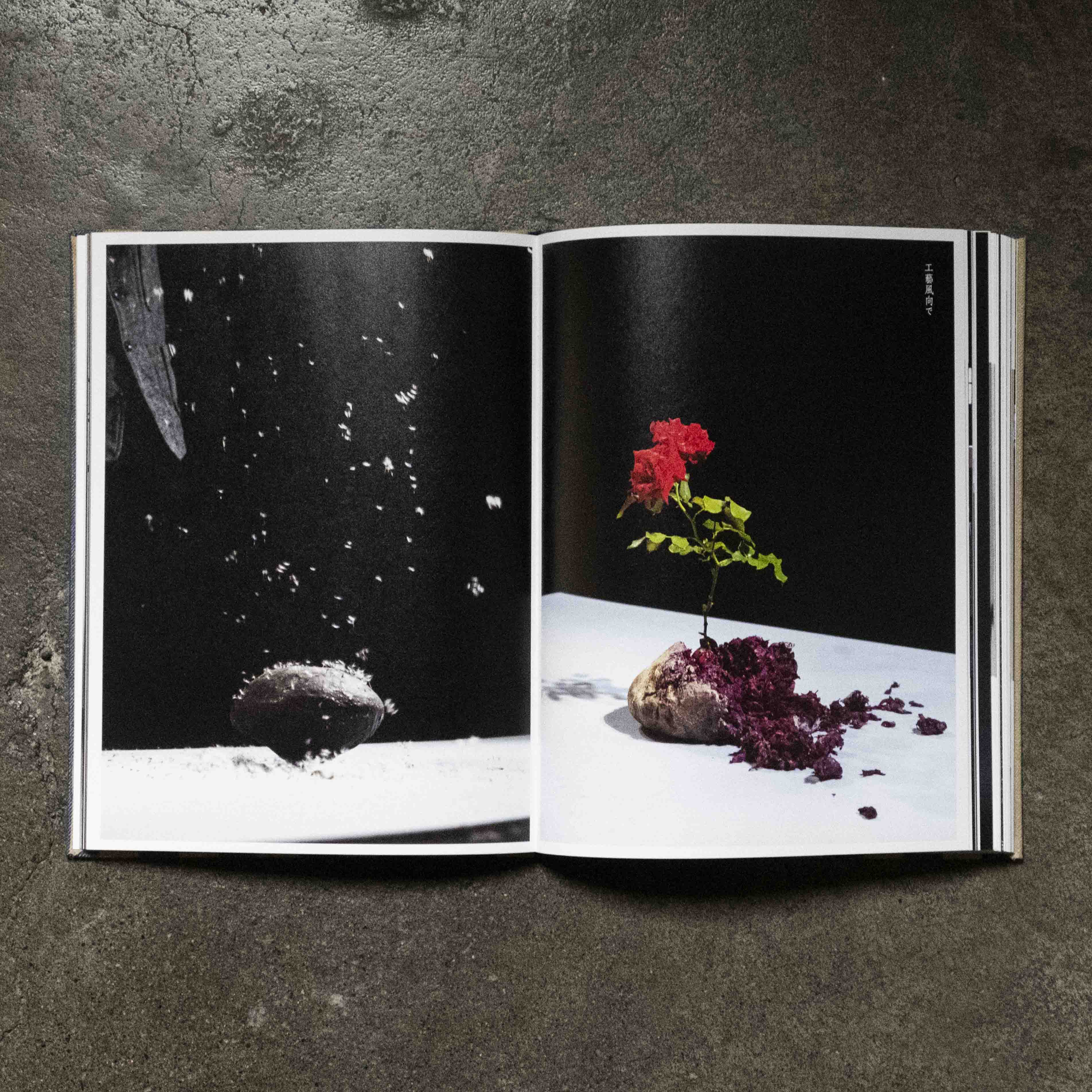
花道家の杉謙太郎さん(1975年生れ)のことは、おそらく10年ほどまえ、古道具坂田の坂田和實さん[78頁参照]からきいた。坂田さんの個人美術館「as it is」でおこなわれた花会(2013年)や、東京、山口、益子の会などもみにいった。そのかん杉さんと何度か話す機会があったが、私が花人の川瀬敏郎さん[8頁参照]の担当編集者だったので、川瀬さんの話になることが多かった。先達にたいする尊敬と、それとはことなる道をゆくという自負の思いの交錯を感じた。「川瀬以後」の花とはなにか、という視点で、すくなくとも私は杉さんの花をみてきた。
福岡県吉井町の薔薇農家に生れ、10代で池坊の花道をまなび、20代前半にはすでに人に花を教えていた。しかしその後日本をはなれ、ヨーロッパをめぐり、帰国後は花道家・原田耕三(1932-2016)に師事した。原田は岡田幸三(池坊の花道家であり花道史研究の大家。川瀬さんも若いころ岡田に師事した)の弟子であり、その住まいのある宇部に居を移して書生のような日々を送る杉さんに、私は、「古典」の様式と精神につよくひかれる求道者の印象をもっていた。
原田歿後の杉さんとは会っていなかった。昨年の春、青花での花会を依頼するために吉井町をおとずれ、いまはそこで暮している杉さんと再会した。疫病流行により花の教室を中断していた彼は、空いた時間に、やきものでおびただしい数の花器をつくっていた。そして、そこにいけられた花は、かつてみた杉さんの花とちがっていた。この特集は、昨年の春から夏にかけて、場所をかえて四度おこなわれた杉さんの花会を取材したものだ。S
It is from Kazumi Sakata (p.78) that I first heard the name Kentaro Sugi (an Ikebana artist, b. 1975) about ten years ago. I went to the flower ceremonies held in Sakata’s private museum, the museum as it is (2013), and exhibitions in Tokyo, Yamaguchi, and Mashiko. During that time, I had several opportunities to chat with Sugi. But since I am close to Toshiro Kawase (an Ikebana artist, see p.8), we spoke about Kawase a lot. I sensed a mixture of respect for his great predecessor and pride in following a different path. I have always seen Sugi’s flowers as the ‘post-Kawase’.
Born to a rose farmer in Yoshii, Fukuoka, he learnt Ikebana in the Ikenobo school in his teens. He started teaching in his early 20s. He left Japan and travelled around Europe, returning to Japan to study under Kozo Harada (an Ikebana master 1932-2016). Harada studied under Kozo Okada (a master of the Ikenobo school and a leading researcher of the history of Ikebana. Kawase also studied under him when he was young). Sugi moved into Harada’s place in Ube, Yamaguchi, and lived like a disciple. So somewhat, I had the impression that Sugi was a seeker, attracted to the style and spirit of the ‘classics’.
I had not met Sugi since the passing of Harada. Then, last spring, I visited Yoshii to request a flower ceremony for events at Seika. I met Sugi, who was back in his hometown. He had to close his Ikebana classes due to the epidemic. In his spare time, he made a lot of pottery vases out of clay in his neighbourhood. The flowers arranged in these vases were very different from the ones I had seen in the past. This feature covers Sugi’s flower ceremonies, held four times from spring to summer last year in multiple locations. (S)

